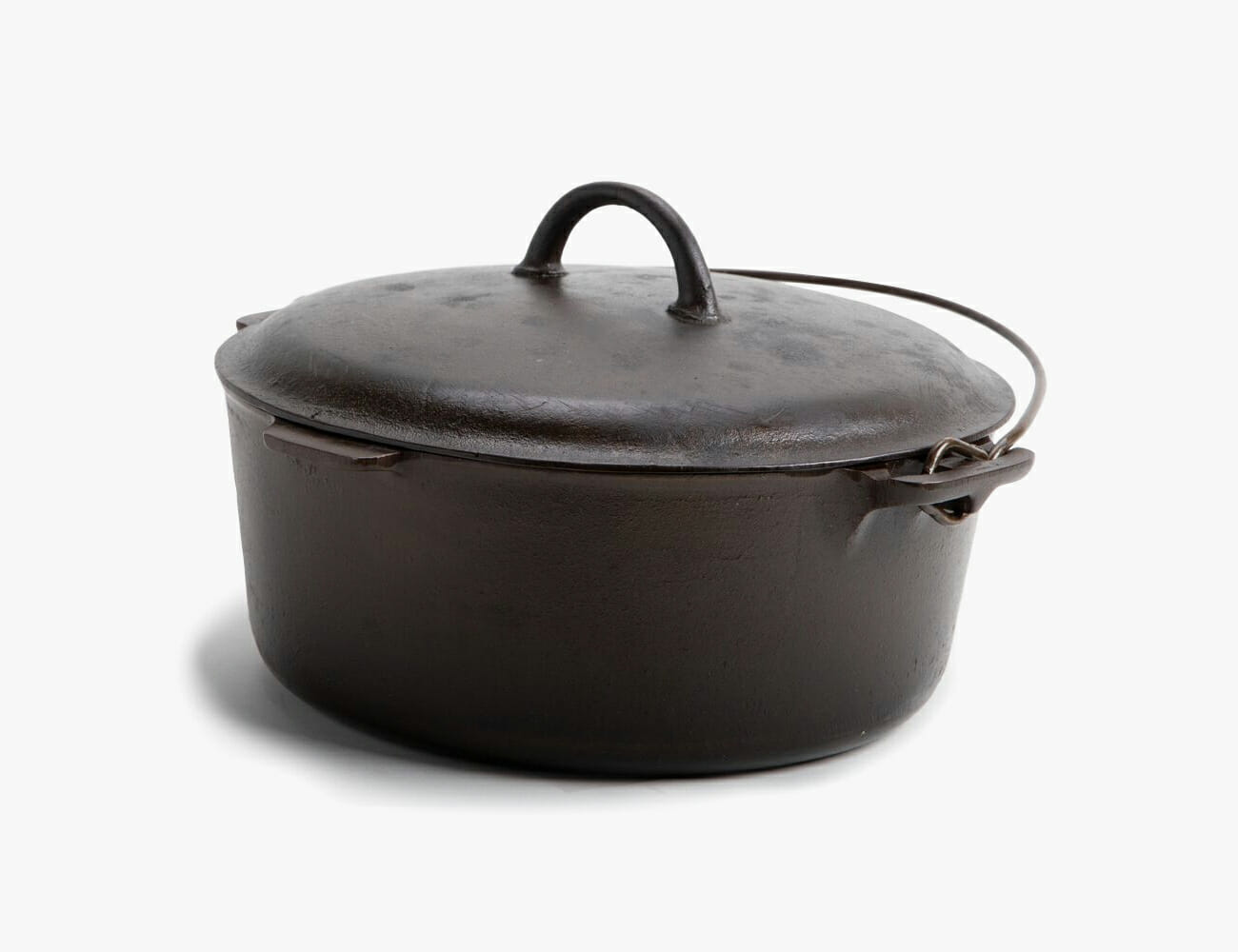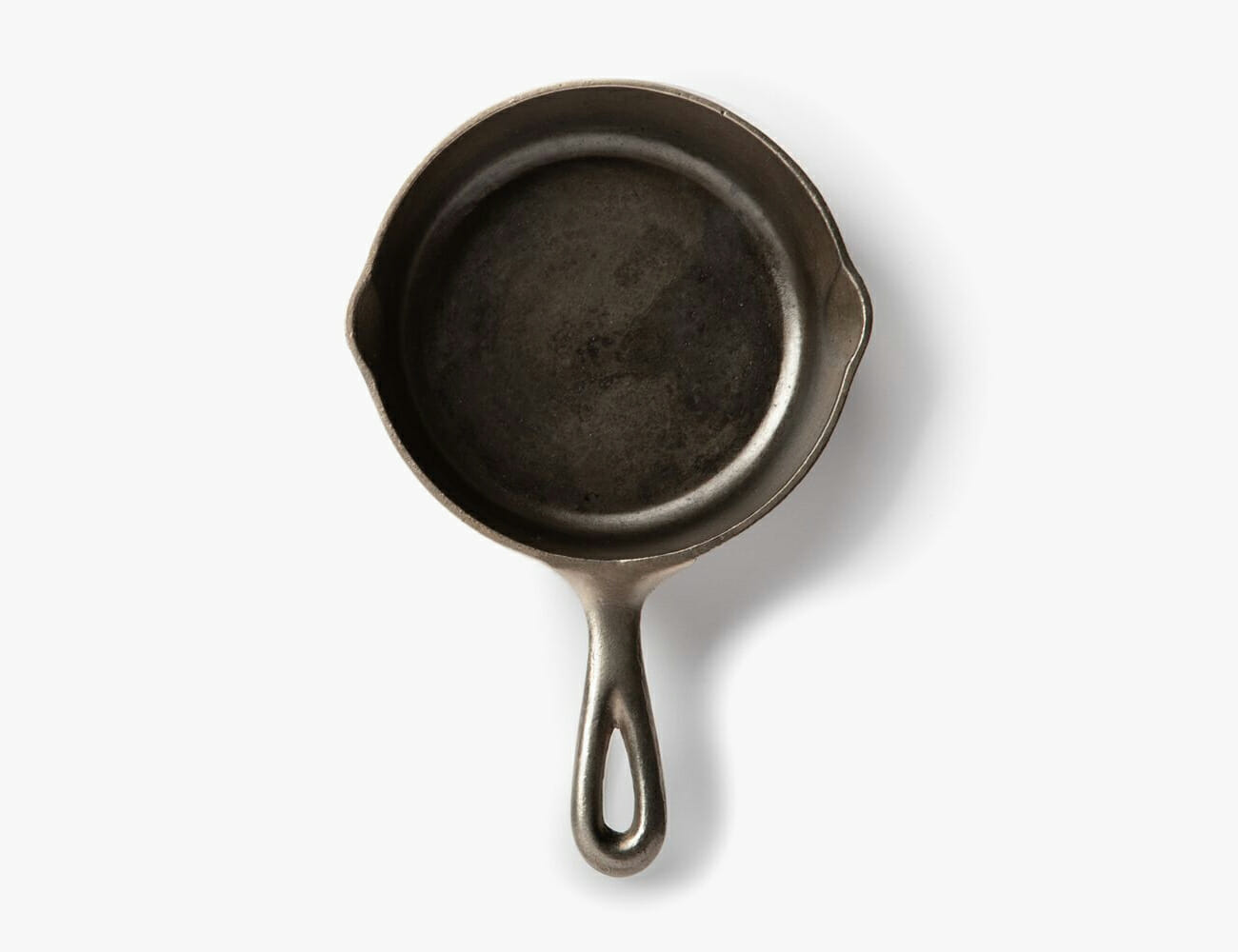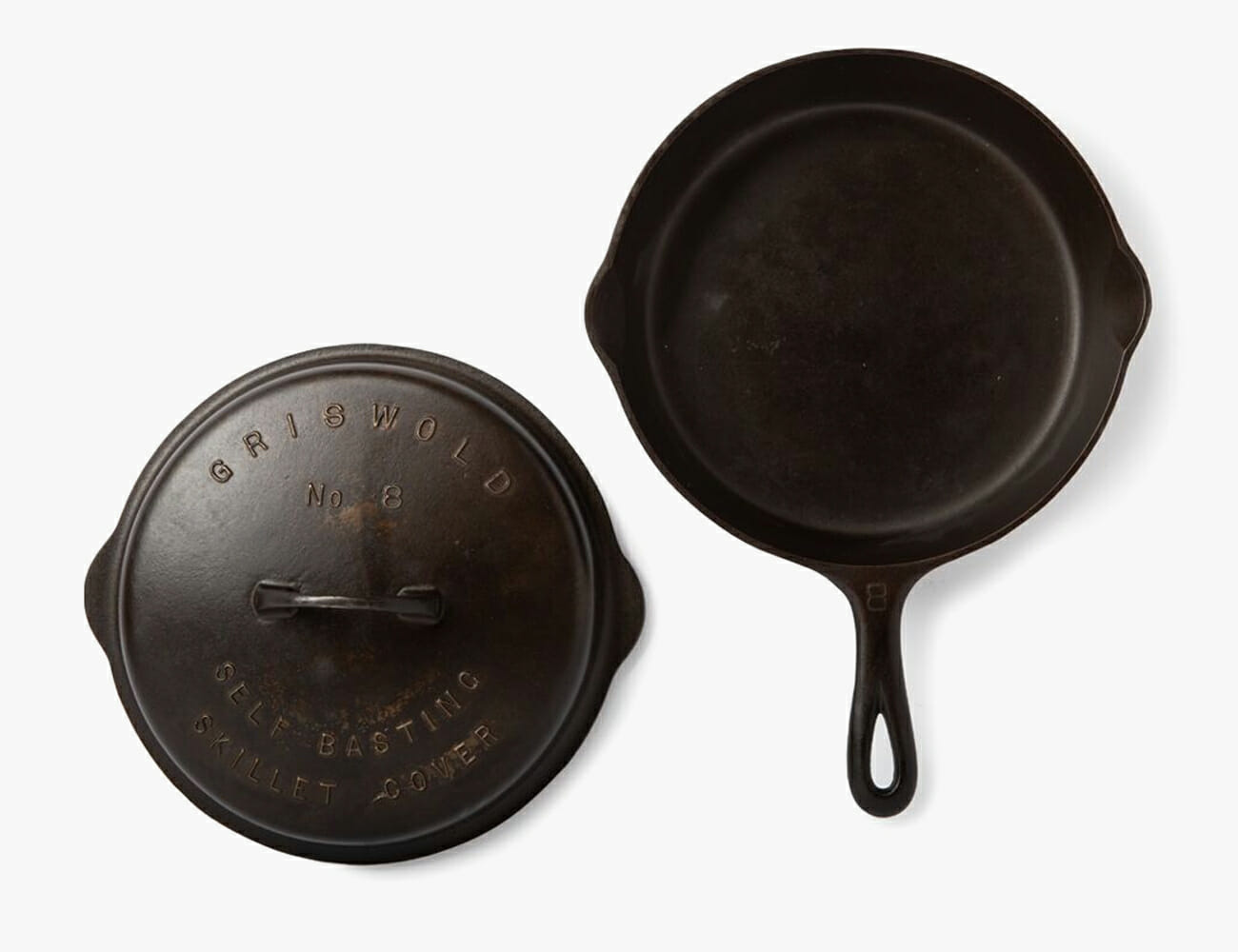C.W. Welch, who goes by Butch — or, depending on how well you know him, Cee Dub — has made evangelizing camp cooking his life’s work. The former Idaho conservation officer has penned cookbooks, run a camp cooking school in the Texas Hill Country and, well before Youtube began christening his successors, hosted a 39-episode exploration of cast iron camp cooking for KWSU in Pullman, Washington. Welch is attached to his cast iron, but he’s not cooking on anything made this century.
Like many cast-iron cookware enthusiasts, Welch prefers the iron of yesteryear, skillets bearing long-gone names such as Griswold and Wagner. He calls finding the old pieces his own “modern treasure hunt,” which is good news for collectors, enthusiasts or just people interested in acquiring vintage cookware: starting this weekend, multiple years worth of his vintage collecting is going on sale.
Hosted by Best Made Co., Welch’s 100-plus pan lot includes cast-iron skillets, saucepans, mailboxes and, yes, Dutch ovens. Some were made as recently as the 1960s, others were poured pre-1900, but all were cast and poured by hand “before the modern wonders of computers and mechanization,” Welch said.
Shop in person at the company’s New York City and Los Angeles stores starting Saturday, July 20, and online the following Monday. From $38 to $498, the Best Made Co. sale is stocked to the teeth with old-school iron. Here’s a preview of what to expect.
Griswold No. 9 Camp Dutch Oven

“The [Dutch ovens] struck a special chord with me simply because Dutch ovens have been my stock in trade for the last forty years,” Welch said. This large camp oven was made in the 1910s by Griswold, vintage cast iron’s most revered name.
Lodge No. 3 Skillet

Lodge didn’t always make skillets that feel like sandpaper. Before 1950, the Tennessee company turned out smooth, hand-poured cast iron just like many of today’s boutique brands. This No. 3 (6.5 inches) was made in the 1920s, and the smooth surface makes for easier cleaning, seasoning and all manner of food-flipping.
Griswold No. 8 Skillet

Welch said one of the most frustrating aspects of collecting vintage skillets is the inability to find matching lids. Lids very in both size and era made, and a difference in either means the set is worth less. That only partially explains the pricetag on this 1930s Griswold.
The No. 8 Griswold is a roughly 10.5-inch pan made in the latter stages of the brand’s life. It’s also in exceptional condition, meaning the price shouldn’t come as a surprise to other collectors. It’s the cooking equivalent of a Goldtop Les Paul.

